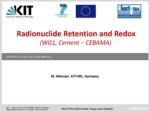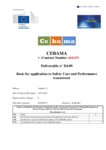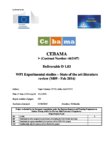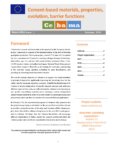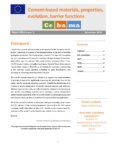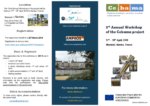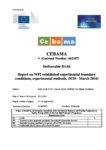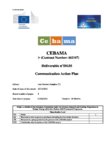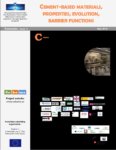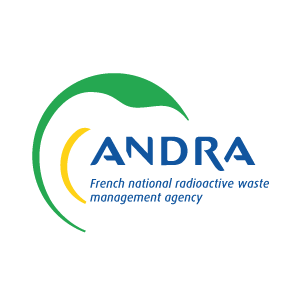CEBAMA: Cement-based materials, properties, evolution, barrier functions
Cement-based materials are key components in repository barrier systems. To improve the available knowledge base, the Cebama project aimed to provide insight on general processes and phenomena that can be easily transferred to different applications and projects.
Overview
Project Dates: 1/06/2015 – 31/05/2019
Project Status: Finished
Project Website: www.cebama.eu
Cebama addressed key issues of relevance for long-term safety and key scientific questions related to the use of cement-based materials in nuclear waste disposal applications. These materials are key components in the barrier system of repositories, independent of the actual host rocks. They are used as waste forms, liners and structural components as well as sealing materials in a broad variety of applications. Waste forms and their behaviour as well as the technical feasibility and long-term performance of repository components are key topics detailed in the IGD-TP Strategic Research Agenda and cover studies related to: (a) the release of radionuclides, (b) long-term behaviour of seals and plugs, (c) evolution of cement-based seals, (d) interaction of cement with clays, and (e) optimisation aspects.
The overall objective of Cebama was to support the implementation of geological disposal by improving significantly the knowledge base for the safety case for European repository concepts. The research undertaken in Cebama was largely independent of specific disposal concepts and addresses different types of host rocks, in addition to bentonite. Cebama did not focus on one specific cement material, but aimed to study a variety of important cement-based materials in order to provide insight on general processes and phenomena which can then be easily transferred to different applications and projects.
The ambition of Cebama was to develop a comprehensive model for predicting the transport characteristics such as porosity, permeability and diffusion parameters of cement-based materials in contact with the engineered and natural barriers of repositories in crystalline and argillaceous host rocks. Dedicated studies on radionuclide retention processes and on the impact of chemical alterations on these processes were part of this advanced approach.
Cebama was a collaborative project funded by the European Commission under the EURATOM Horizon 2020 Framework. The project was implemented by a consortium with 27 beneficiaries, from nine EURATOM Signatory States, Japan and Switzerland. National waste management organisations contributed to the project by participation in the End-User Group, by co-funding beneficiaries, and by providing for knowledge and information transfer.
Objective
The specific objectives of Cebama are summarised as follows:
- Perform experimental studies to understand the interface processes between cement-based materials and the host rocks (crystalline rock, Boom Clay, Opalinus Clay (OPA), Callovo-Oxfordian (COX) clay) or bentonite backfill and assess the impact on physical (transport) properties. Particular attention will be paid to understanding how chemical reactions affect porosity, water and gas transport properties at the interface for different systems. These aspects are investigated by laboratory tests and up-scaling by utilisation of in situ
- Study radionuclide retention processes in high pH concrete environments. Radionuclides that have high priority from the scientific and applied perspective are selected:
- Analyse the retention of some specific radionuclides in high pH concrete environment, especially: Be, C, Cl, Ca, Se, Mo, I, Ra.
- Assess the impact of chemical alterations (e.g. high pH concrete ageing, carbonation, transition from oxidising to reducing conditions) on radionuclide retention.
- Improve validity of numerical models to predict changes in transport processes as a result of chemical degradation. Support advanced data interpretation and process modelling, covering mainly issues responsible for the changes in transport properties:
- Allow improved interpretation of experiments on chemical interactions affecting porosity, water and gas transport properties at the interfaces by process level and mechanistic modelling.
- Extrapolate modelling from system-level to modelling for safety case application.
Further objectives covered dissemination of key results to scientific and non-scientific oriented stakeholders as well as training and education of young professionals for carrying over the expertise into future implementation programmes.




